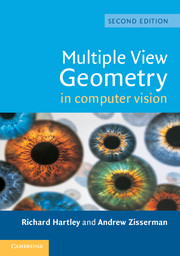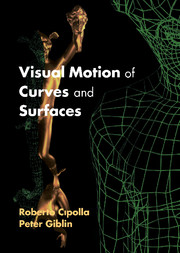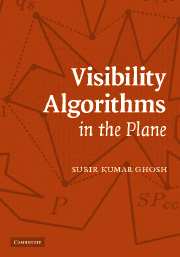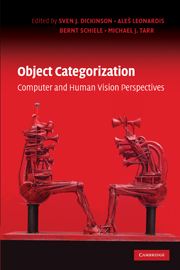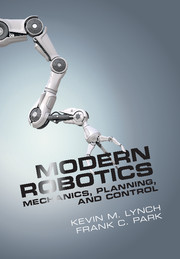Multiple View Geometry in Computer Vision
A basic problem in computer vision is to understand the structure of a real world scene given several images of it. Techniques for solving this problem are taken from projective geometry and photogrammetry. Here, the authors cover the geometric principles and their algebraic representation in terms of camera projection matrices, the fundamental matrix and the trifocal tensor. The theory and methods of computation of these entities are discussed with real examples, as is their use in the reconstruction of scenes from multiple images. The new edition features an extended introduction covering the key ideas in the book (which itself has been updated with additional examples and appendices) and significant new results which have appeared since the first edition. Comprehensive background material is provided, so readers familiar with linear algebra and basic numerical methods can understand the projective geometry and estimation algorithms presented, and implement the algorithms directly from the book.
- Thoroughly updated, with over 50 algorithms and lots more extra material
- Explains the required mathematical background
- Can be used for graduate courses or as an overview of field
Reviews & endorsements
'I am very positive about this book. The authors have succeeded very well in describing the main techniques in mainstream multiple view geometry, both classical and modern, in a clear and consistent way.' Computing Reviews
'… a book which is timely, extremely thorough and commendably clear … Overall, the approach is masterly … The authors have managed to present the very essence of the subject in a way which the most subtle ideas seem natural and straightforward. I have never seen such a clear exploration of the geometry of vision. I would wholeheartedly recommend this book. It deserves to be in the library of every serious researcher in the field of computer vision.' Journal of Robotica
'The new edition features an extended introduction covering the key ideas in the book (which itself have been updated with additional examples and appendices) and significant new results which have appeared since the first edition. Comprehensive background material is provided, so readers familiar with linear algebra and basic numerical methods can understand the projective geometry and estimation algorithms presented, and implement the algorithms directly from the book.' Zentralblatt MATH
Product details
March 2004Paperback
9780521540513
670 pages
248 × 175 × 36 mm
1.465kg
36 colour illus. 35 tables 124 exercises
Temporarily unavailable - available from TBC
Table of Contents
- 1. Introduction - a tour of multiple view geometry
- Part 0. The Background: Projective Geometry, Transformations and Estimation:
- 2. Projective geometry and transformations of 2D
- 3. Projective geometry and transformations of 3D
- 4. Estimation - 2D projective transforms
- 5. Algorithm evaluation and error analysis
- Part I. Camera Geometry and Single View Geometry:
- 6. Camera models
- 7. Computation of the camera matrix
- 8. More single view geometry
- Part II. Two-View Geometry:
- 9. Epipolar geometry and the fundamental matrix
- 10. 3D reconstruction of cameras and structure
- 11. Computation of the fundamental matrix F
- 12. Structure computation
- 13. Scene planes and homographies
- 14. Affine epipolar geometry
- Part III. Three-View Geometry:
- 15. The trifocal tensor
- 16. Computation of the trifocal tensor T
- Part IV. N -View Geometry:
- 17. N-linearities and multiple view tensors
- 18. N-view computational methods
- 19. Auto-calibration
- 20. Duality
- 21. Chirality
- 22. Degenerate configurations
- Part V. Appendices: Appendix 1. Tensor notation
- Appendix 2. Gaussian (normal) and chi-squared distributions
- Appendix 3. Parameter estimation. Appendix 4. Matrix properties and decompositions
- Appendix 5. Least-squares minimization
- Appendix 6. Iterative Estimation Methods
- Appendix 7. Some special plane projective transformations
- Bibliography
- Index.

